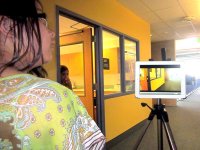Next Generation Learning: Bringing Student Agency Back to Schooling
The internet has enabled students to follow their passions toward self-directed learning. How can we, as educators, fold that learning back into their schooling experience?
Your content has been saved!
Go to My Saved Content.In a recent New Yorker essay, Matthew Malady writes about his experience going offline for three days. It's torture for him. He tries to distract himself with yard and cleaning projects, reading actual books, and watching an entire New York Jets game. He makes it, though barely, to the finish line and completes his experiment. What he realizes that he missed most during his offline hiatus was the ability to learn new things in an instant. He explains:
He goes on to illuminate the biggest takeaway from his experiment: "What I'm learning may not always be of great social value, but I'm at least gaining some knowledge."
His words have enormous implications for educators.
Self-Directed Learning
Our students are learning on their own, outside of school, on the internet, and while what they are learning may not be of "great social value," it does have the potential to add great social value to our schools.
How can educators begin to capture what students are learning outside of school? Here are some examples:
We discovered recently that one of our students was hosting a conference on YouTube for 10,000 people focused on video design. He's passionate about filmmaking, very skilled at it, and spends an inordinate amount of time learning how to get better and better.
He’s brought these skills into his physics classes, using video to capture and document his experiments. Where has he learned how to do this? Outside of school, through trial and error, and by watching a lot of YouTube videos to learn more about the skills needed for filmmaking.
Another student is designing his own app and learning how to do it all on the internet. He's partnering with some of our math teachers to better understand the math needed to complete the app design. We asked him what support he needed to make progress on this project. He responded that he'd like more flexibility with his schedule and more time outside of the curriculum to work on this project.
The students are setting us a powerful example, designing their own learning experiences in authentic, personally meaningful ways.
I had a conversation with two students about the value of interdisciplinary learning. They shared their experiences in one of our interdisciplinary courses called Art and Social Change. The course was transformative for both of them. They commented and marveled at the skillful collaboration of the two teachers who taught the course. This course crystallized depth of learning, relationships, and community as the teachers leveraged the expertise of their colleagues to come in as guest speakers on jazz and LGBTQ history.
Noise and Dissonance
David Levy, a professor at the University of Washington Information School, talks in his new book Mindful Tech about how learning has become "noisier." "The world just got noisier," he writes, "because so many voices are now being heard." Levy is talking about the internet generating more noise.
What those two students in the Art and Social Change class are saying is that they appreciated and valued so many voices being heard. In addition to the collaboration that their teachers modeled, the students observed them bringing in voices of our school community to broaden perspectives. In addition, the students commented on the power of personal narrative embedded in their culminating projects.
Yes, the learning is a bit noisier as student engagement and investment grow through self-directed and interdisciplinary learning. However, not all adults see the opportunities that Levy voices.
Jim Steyer, founder of Common Sense Media, discusses the confounding nature of how kids are using technology and how that causes dissonance for adults. On CNN, he writes:
Well, the answer often lies with the students, as the examples that I shared above illustrate. The students are leading and are out in front. We should at least try to keep pace with them.
The "Human Economy"
We are seeing a move away from the knowledge economy toward what Dov Seidman calls the human economy.
In the Harvard Business Review, Seidman writes about the shift to a human economy, focused on "hired hearts" and away from the knowledge economy, which held "sheer intellect" in highest regard. He reports:
The students who are soaring today know how to make connections, build community, and create. Many of them yearn for flexibility in their days to be able to conduct research, develop advocacy skills, reach out to a broad-based community, and use the tools available to them to make meaning.
For schools and educators, how do we merge school programs and curriculum with student interest, passion, advocacy, and engagement when so much of their learning is happening beyond the walls of the school?
As Mark Twain said, "I never let my schooling interfere with my education."
What examples have you seen where students are learning outside of school and bringing their learning into school?
